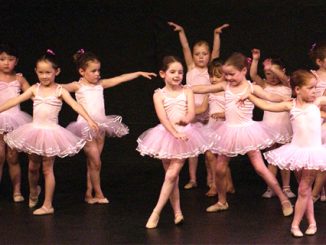Architecturally magnificent houses, sunny parks and converted artist studios may all play host to long-dead but still present Inner Westies.
The Abbey
Known for its colourful history and persistent claims that a “lady in white” roams its halls, the Abbey is just one of the Annandale ‘Witches Houses’ (named for their spires, resembling witches hats) built by former Mayor of Annandale, John Young.
While Young initially built the house for his estranged wife Eleanor, she passed away in England in 1885 and the couple never lived in the property. When Ciao spoke to psychic healer, Caterina Ligato, back in 2011 she felt there was a spirit in the house. Although that never seemed to bother the late Dr Geoffrey Davis, who lived in the house for decades with his seven children and was never driven away despite reporting strange occurrences like doors opening by themselves.
The 50-room home fell into disrepair following Davis’ death in 2008 and was put on the market for the first time in 50 years. It sold for a record $4.86 million at auction. Whether you’re a believer or not, it’s good to know that the stories didn’t effect the property price.
Camperdown Cemetery
Countless ghost stories surround Camperdown Cemetery on Church Street, Newtown – and it’s no wonder considering the suburb’s somewhat gruesome past, which is well-documented in the National Trust of Australia booklet The Darker Side of Newtown and Surrounds. However, many of the stories are unsubstantiated urban legends.
One of the most well-known of these is the story of lovers, Hannah Watson and Captain John Steane. Upon discovering his wife’s infidelity, Thomas Watson apparently cursed the lovers. The story goes that they died soon after and were buried a few metres apart in the cemetery. Many claim to see Hannah’s ghost emerging from her tomb but no one has confirmed if the story is true.
Over 18,000 people were buried at Camperdown Cemetery following its establishment in 1848 but after the horrific murder of 11-year-old Joan Norma Ginn, whose body was found among headstones in 1946, most of the cemetery was turned into public space; the remaining headstones were moved to the churchyard space they occupy today, while the bodies remain under the park.
Callan Park
Artist Ella Condon’s video installation ‘Embodied Space’ was recently shown as part of History Week, and explored the lingering presence in spaces like Callan Park, which have had rather turbulent histories. Her practice engages with embedded history remaining within sites of tension and it was working late in her studio in Callan Park and experiencing the unnerving feeling of a presence that led her to investigate the building’s history.
“While the hospital developed an infamous reputation, the goals of its early proponents were apparently humane and well intentioned,” says Ella. Unfortunately however, the hospital reached capacity in 1900 and changed from a sanctuary for moral therapy treatment to a gaol that was understaffed and oppressive.
“In the process of my research, I discovered 1,228 people had died in a neighbouring asylum in Gladesville between 1838 and 1893. They lie buried there in unmarked graves,” says Ella, whose work arises from these findings. “Space is like a receptive membrane; walls retain memories and resonate with energies of the past. Within the structure of this building, echoes and residues of the past remain…
“My aim is to portray the presence of the patients who were seeking help and experienced this misguided cruelty. The process I have undergone in my studio work involves investigating the site, the empty wards and underground ‘dungeons’ to capture the abstract sounds and whispers within the cracks and walls of its foundation.” Ella’s haunting pictures certainly seem to achieve just that.


Leave a Reply
You must be logged in to post a comment.